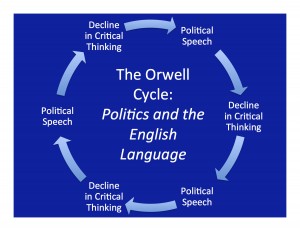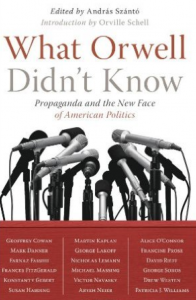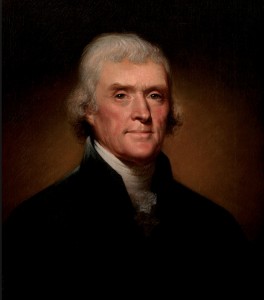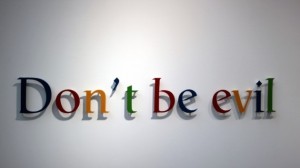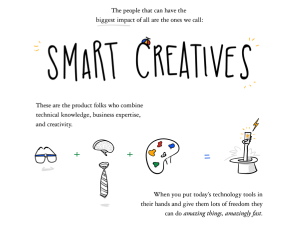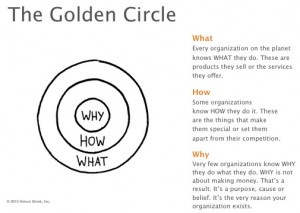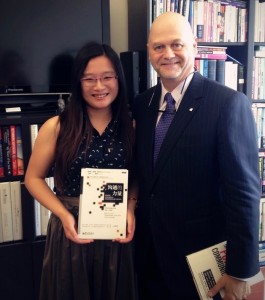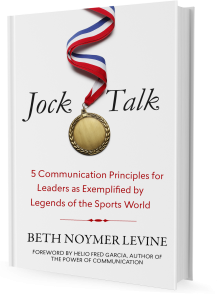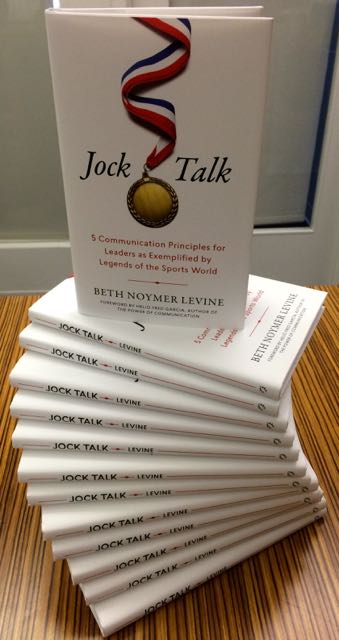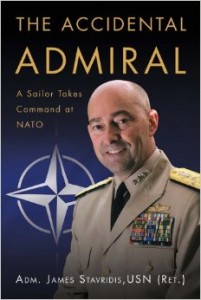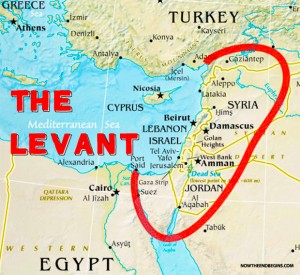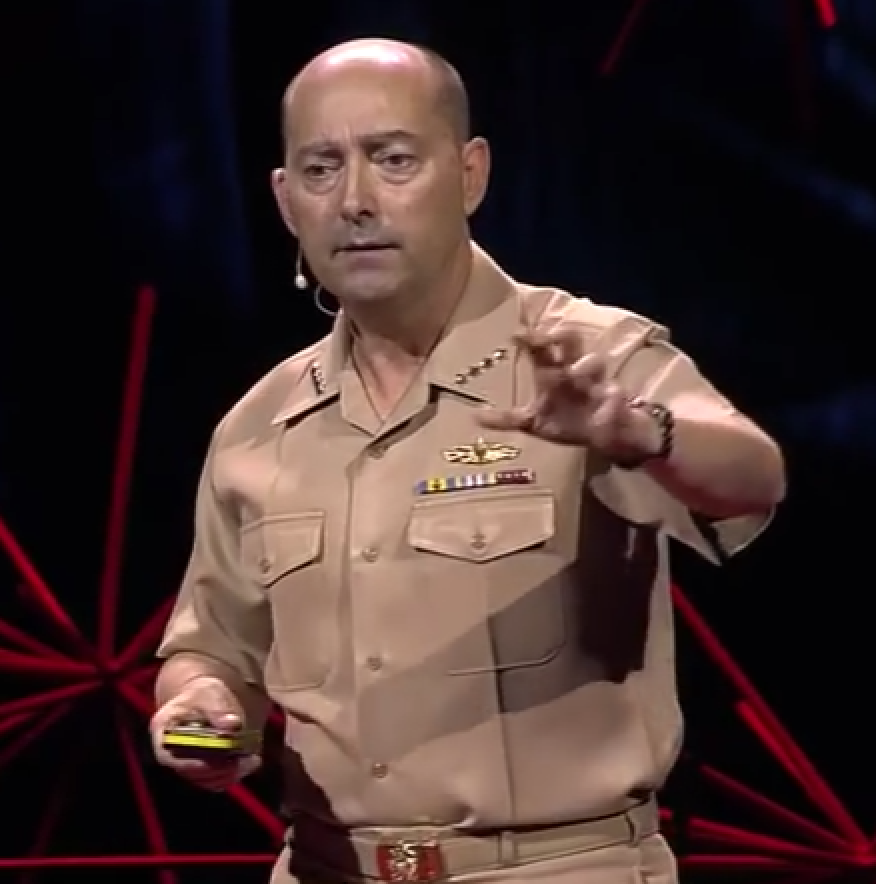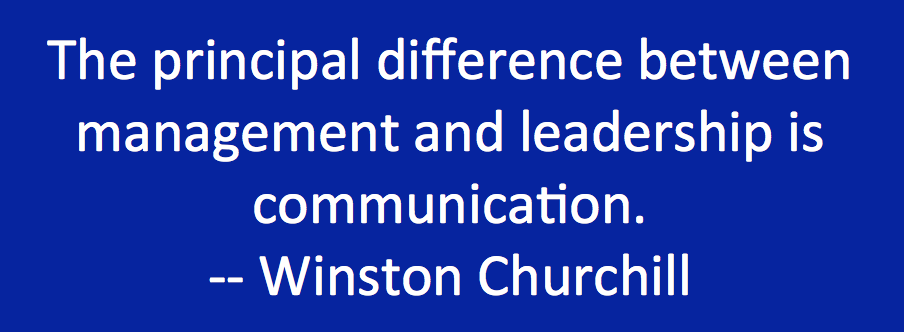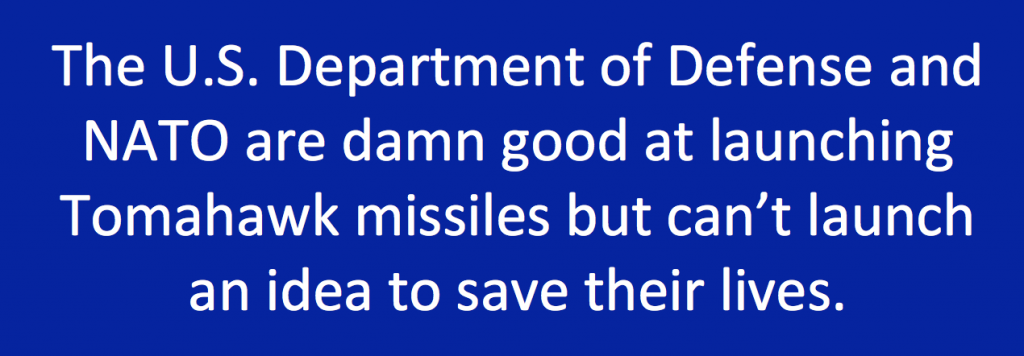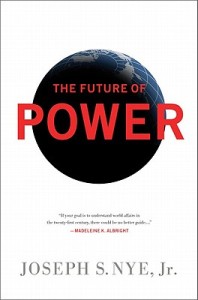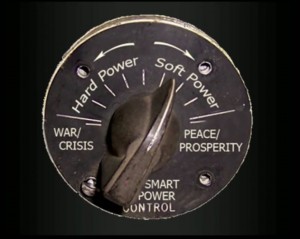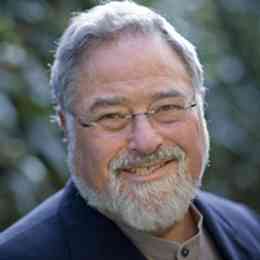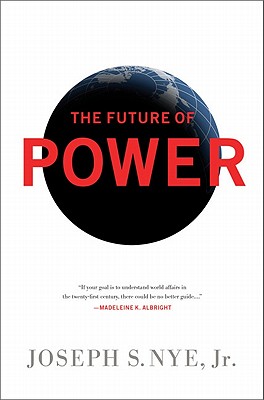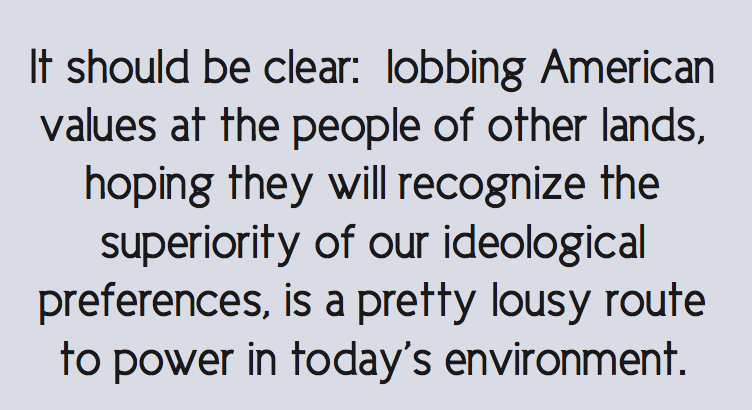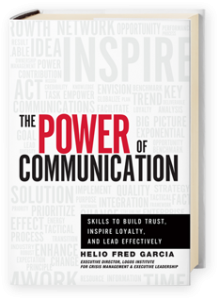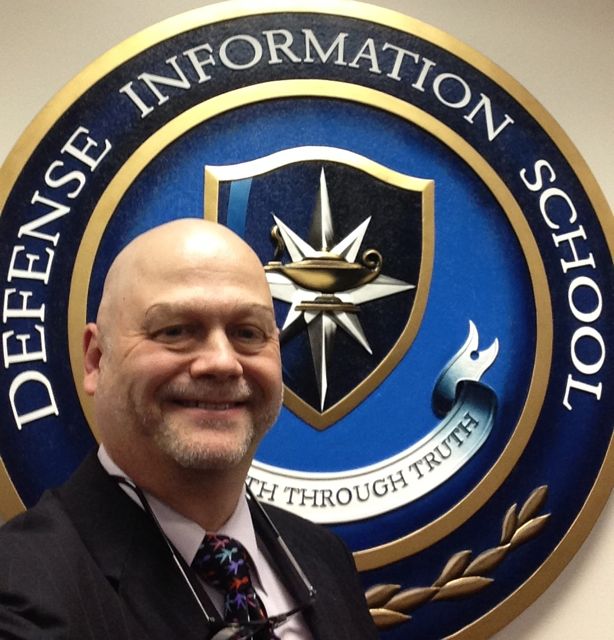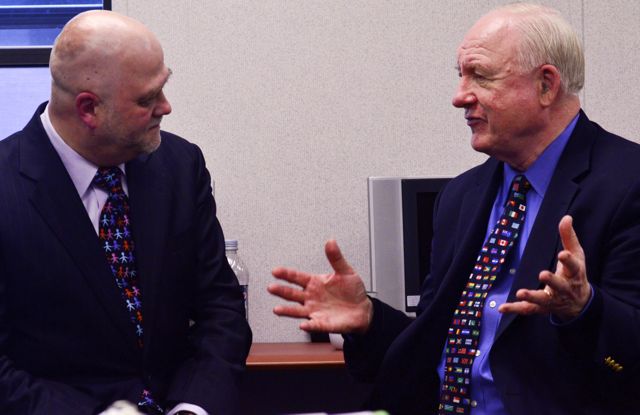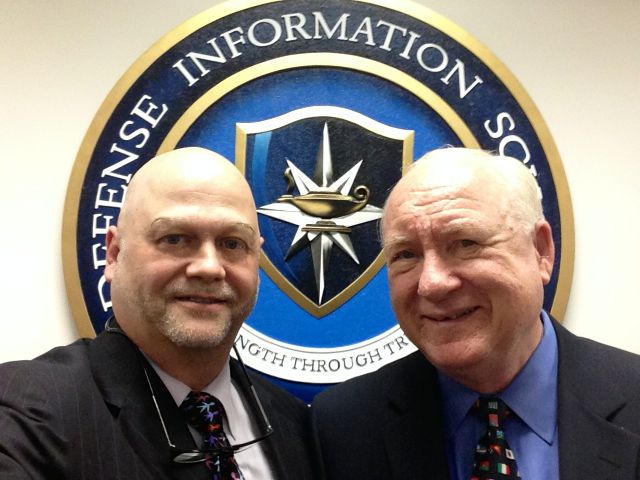This week the Donald Trump phenomenon seemed to reach a tipping point, with Republican leaders scrambling to prevent his continued wins in the primaries, and with debate discourse hitting new lows. Not only did we see him feign ignorance of David Duke and the KKK, but we were even treated to debate commentary about the relative size of the candidate’s genitals.
Trump: Not a Cause But a Consequence
But the rise of Donald Trump as the presumptive nominee of the Republican Party, and all the bipartisan angst it is creating, is not a cause but rather a consequence.
It is the predictable result of decades of degradation of political discourse, facilitated by a media more interested in grabbing an audience’s attention than in covering issues. And the worst part is that we should have seen it coming.
In fact, we could have seen it coming if we had known what to look for. And we should have known.
Even now as the frightening reality is finally being recognized, we seem to be grappling only with the symptom of the problem — what Trump says and how to prevent him from ever being in a position of authority — without recognizing that there’s a greater challenge that will continue regardless of how we address the immediate problem.
We can solve the Trump problem but still be as vulnerable to another authoritarian figure who energizes the disenfranchised, the angry, and the scared to similar effect.
Orwell Called It
Almost exactly seventy years ago George Orwell published Politics and the English Language. That brief essay served as the nonfiction treatment for what two years later would become Orwell’s Nineteen Eighty-Four.
Most educated Americans are familiar with Nineteen Eighty-Four. That popular novel is based in a dystopian future in a continuous state of war, where an intrusive and authoritarian government keeps people uninformed, and where political language is intentionally misleading. So the Ministry of Peace wages war. The Ministry of Truth controls all information, news, propaganda, and art. The Ministry of Plenty rations food. Our term “Orwellian” refers to the use of language to convey the opposite of reality.
But most educated Americans are not familiar with the essay that served as the novel’s basis. Sadly, Politics and the English Language helps us understand the current state of the American body politic, and it isn’t pretty.
Says Orwell:
“In our time, political speech and writing are largely the defense of the indefensible.”
“Political language – and with variations this is true of all political parties… – is designed to make lies sound truthful and murder respectable, and to give an appearance of solidity to pure wind.”
The problem arises when politicians use language in a disingenuous way, asserting things they don’t necessarily believe and making arguments that may sound compelling but that logically don’t make sense.
“The great enemy of clear language is insincerity. When there is a gap between one’s real and one’s declared aims, one turns, as it were instinctively, to long words and exhausted idioms, like a cuttlefish squirting out ink. In our age there is no such thing as ‘keeping out of politics.’ All issues are political issues, and politics itself is a mass of lies, evasions, folly, hatred and schizophrenia. When the general atmosphere is bad, language must suffer.”
But however damaging individual instances of political language, of insincere speech, or of intentionally misleading statements may be, it’s the effect of these that causes harm.
The central idea in Politics and the English Language is this:
- Political speech has the effect of reducing citizens’ critical reasoning skills….
- …This creates a self-perpetuating cycle…
- …where as people become less discerning they become more susceptible to political speech…
- …which further diminishes their critical reasoning skills…
- …and so on…
- …and so on…
- …until a fully uninformed public creates conditions for authoritarian government to thrive.
A Cause Can Become an Effect, And So On:
It’s The Cycle That Matters
The key idea, though, is the relationship between cause and effect.
Orwell notes that an effect can become a cause, and a cause can become an effect. It’s the cycle that matters. And in the end the result is a citizenry that remains intentionally ignorant of the issues that matter, unaware of what is happening to them, and easily manipulated by politicians.
“But if thought corrupts language, language can also corrupt thought. A bad usage can spread by tradition and imitation, even among people who should and do know better.”
“Now, it is clear that the decline of a language must ultimately have political and economic causes: it is not due simply to the bad influence of this or that individual writer. But an effect can become a cause, reinforcing the original cause and producing the same effect in an intensified form, and so on indefinitely. A man may take to drink because he feels himself to be a failure, and then fail all the more completely because he drinks. It is rather the same thing that is happening to the English language. It becomes ugly and inaccurate because our thoughts are foolish, but the slovenliness of our language makes it easier for us to have foolish thoughts.”
The predictable result of this cycle is a citizenry that is easily manipulated, that becomes immune to persuasion by evidence and reasoning, and that doesn’t notice the multiple contradictions all around.
Choosing Ignorance:
Identity-Protective Cognition Thesis
Three years ago Orwell’s argument that political language causes a decline in critical thinking was supported by research by professors at Yale, Cornell, Ohio State, and the University of Oregon. Their study, Motivated Numeracy and Enlightened Self-Government, showed that math problems that seem to be about benign topics are easily solved by people with strongly held political views. But when the same math problems are framed in terms of polarized political issues — in this case, gun rights — both progressive-and-conservative-leaning participants have a very hard time getting the math right.
The authors conclude that
“Subjects [use] their quantitative-reasoning capacity selectively to conform their interpretation of the data to the result most consistent with their political outlooks.”
A 2011 essay in Mother Jones by Chris Mooney on the neuroscience of political reasoning helps us understand why this is so. The piece begins with seminal research from the early fifties by famous Stanford psychologist Leon Festinger, who concluded:
“A man with conviction is a hard man to change. Tell him you disagree and he turns away. Show him facts or figures and he questions your sources. Appeal to logic and he fails to see your point.”
Mooney explains:
“Since Festinger’s day, an array of new discoveries in psychology and neuroscience has further demonstrated how our preexisting beliefs, far more than any new facts, can skew our thoughts and even color what we consider our most dispassionate and logical conclusions.”
“This tendency toward so-called “motivated reasoning” helps explain why we find groups so polarized over matters where the evidence is so unequivocal: climate change, vaccines, “death panels,” the birthplace and religion of the president, and much else. It would seem that expecting people to be convinced by the facts flies in the face of, you know, the facts.”
Ten years ago, on the sixtieth anniversary of the publication of Politics and the English Language, the New York Public Library hosted a conference conceived by five journalism school deans and sponsored by the Open Society Institute. The conference proceedings later were published as a book of essays called What Orwell Didn’t Know: Propaganda and the Face of the New Politics. Much of what was described ten years ago can be seen now.
For example, Susan Harding, a professor of anthropology at UC Santa Cruz, who has written extensively about the religious right, explained a process called “revoicing.” She described revoicing as creating apparent structures of legitimacy and embedding within them positions, points of view, or ideologies that would not pass muster in actual legitimate institutions. She says that this revoicing process leads to controversial positions and institutions becoming mainstream by co-opting the symbols and vocabulary of the mainstream. She gives an example of the late Rev. Jerry Falwell:
“Falwell’s church ministries, media and political organizations, and educational institutions were, in effect, a hive of cultural workshops in which both fundamentalist and secular ideas, images, narratives, and practices were smelted, refashioned, melded, packaged, and distributed with spectacular success.
Falwell’s Lynchburg Baptist College morphed into a liberal arts college, Liberty Baptist College, and then into a university, Liberty University. The Museum of Earth and Life History on its campus occupied the cultural space of a museum of natural history, but recorded displays of man and beast with the assumptions of creation science rather than evolution. Liberty Godparent Homes converted a former home for unwed mothers into a staging ground for pro-life save-a-baby narratives that in turn revoiced feminist story lines in born-again Christian terms.
We can see this revoicing, this co-opting of mainstream symbols, vocabularies, and institutions, playing out over the last decade:
- The Creation Museum, which has the look and feel of a science or natural history museum, but whose exhibits and educational material assert that the earth is only thousands of years old, that evolution is a fraud, and that humans and dinosaurs co-existed.
- The Intelligent Design Institute, which seems to be a think tank and educational organization is really a media and production group whose work is used to refute the scientific theory of evolution.
- Fox News, ostensibly an objective news organization, but whose editorial focus in the promotion of conservative causes and candidates. It even has an appropriately Orwellian slogan, “We report, you decide.”
This process provides cover for those who would ignore mathematics, science, and observation and insist that reality is consistent with a particular political, social, or religious viewpoint. Take, for example, a fourth grade science quiz administered by a religiously-affiliated school in South Carolina. The student received a perfect grade for answers that would have been marked as incorrect in a school, religious or otherwise, with a mainstream science curriculum; in fact, some of the quiz’ questions would have been unintelligible in a more traditional science curriculum. But this approach is influencing millions of citizens and future voters.
Truthiness
At about the same time the revoicing discussion was taking place, the new late night comedy host Stephen Colbert coined the phrase Truthiness to describe political discourse. Parodying Fox News, he defined truthiness as preferring concepts or facts one wishes to be true, rather than concepts or facts known to be true. As Colbert put it, “I don’t trust books. They’re all fact, no heart.”
In 2005 the American Dialect Society named Truthiness the Word of the Year.
Sadly, what Colbert intended as a comedic take on misdirection has proven to be a defining element of much modern political debate. Candidates argue not the truth they know but the truth they wish, as if it were known.
Why All Heart Matters
Colbert differentiated between thinking with the brain and knowing with the heart. He actually hit on something profound about how humans make judgments, and why it’s so easy for political language to have the Orwellian effect.
As described by Chris Mooney in Mother Jones:
“The theory of motivated reasoning builds on a key insight of modern neuroscience: Reasoning is actually suffused with emotion (or what researchers often call “affect”). Not only are the two inseparable, but our positive or negative feelings about people, things, and ideas arise much more rapidly than our conscious thoughts, in a matter of milliseconds—fast enough to detect with an EEG device, but long before we’re aware of it.”
“That shouldn’t be surprising: Evolution required us to react very quickly to stimuli in our environment. It’s a “basic human survival skill,” explains political scientist Arthur Lupia of the University of Michigan. We push threatening information away; we pull friendly information close. We apply fight-or-flight reflexes not only to predators, but to data itself.”
“We’re not driven only by emotions, of course—we also reason, deliberate. But reasoning comes later, works slower—and even then, it doesn’t take place in an emotional vacuum. Rather, our quick-fire emotions can set us on a course of thinking that’s highly biased, especially on topics we care a great deal about.”
“We have seen this trend for several decades, where for political expediency citizens have been conditioned to not trust any source of news that includes conclusions contrary to those consistent with a political point of view.”
We Apply Fight-or-Flight Reflexes
Not Only to Predators, But to Data Itself
Such citizens, who reflexively flee from the facts, are unlikely to be aware of, or even care about, contradictions among any candidate’s positions. Simultaneously holding two contrary positions, the very definition of absurdity, would ordinarily dismiss someone as not to be taken seriously. But in the political world such contradictions seem not to matter.
In such an environment citizens literally are unable to notice absurdities. But the same part of the brain, the Amygdala, that causes the flight response also causes the fight response. So any intruder is seen to be worthy of a fight. And violence tends to ensue.
And as the French philosopher Voltaire once warned, “those who can make us believe absurdities can make us commit atrocities.”
So within a week of Trump calling for a ban of all Muslims entering the country, we saw a rash of attacks on mosques and on people perceived to be Muslim or Arab. We have seen people removed from his rallies while being taunted by Trump from the podium, calling for his supporters to punch the person being removed in the face; to have the crowd strip people of their coats before sending them into the freezing weather. This week, after his flirtation with the KKK and white supremacists, we saw peaceful non-protesting black students ejected from his rallies, and at least one white supremacist leader assault a black woman as she was being removed from the rally.
So what characterizes the Trump voters?
According to Derek Thompson in The Atlantic, the first common element is lack of higher education:
“The single best predictor of Trump support in the GOP primary is the absence of a college degree. ”
“Diplomas are what Ron Brownstein calls the “new Republican fault line.” In 2012, Mitt Romney struggled for months to consolidate support because, even as he had clear support among college-educated Republicans, he fared worse among non-college voters.”
So there’s more than a passing coincidence in Trump’s cheering “I love the poorly educated!” after the Las Vegas caucuses.
The second characteristic is feeling voiceless. A survey from RAND Corporation, found:
“Voters who agreed with the statement “people like me don’t have any say about what the government does” were 86.5 percent more likely to prefer Trump. This feeling of powerlessness and voicelessness was a much better predictor of Trump support than age, race, college attainment, income, attitudes towards Muslims, illegal immigrants, or Hispanic identity.”
This helps explain voters’ reports that they support Trump because he speaks what they feel.
There is also a fear of the other:
“Trump has clearly played on fears of non-white outsiders, by likening Mexican immigrants to rapists, promising to deport illegal immigrants and to build a wall between the U.S. and its neighbors, pledging to keep Muslims out of the country during the Syrian diaspora, and playing coy with his relationship with the KKK.”
“But he has also told a simple three-part narrative to attract the despondent demographic: America is losing; Donald Trump is a winner; and if Trump becomes president, America will become a winner, too. This Great Man Theory of political change, however, strikes others as potentially dangerous…”
Fourth, Trump voters want to wage war against outsiders, both those within and those beyond our borders. According to Matthew MacWilliams of University of Massachusetts, Amherst,
“The classic definition of authoritarianism implies a tradeoff — more security for less liberty — but MacWilliams says it’s also about identifying threatening outsiders and granting individuals special powers to pursue aggressive policies to destroy them. The best predictor of Trump support… [is] “authoritarianism … [and] a personal fear of terrorism” that best predicted Trump’s support across the state.”
“Trump’s foreign policy, like his policy for anything, is a muddle. He’s cautious toward the Israel-Palestine conflict, yet he told Fox News he would kill the families of ISIS members to stop their advance, something awfully close to a public pledge to commit war-crimes.”
“But it’s his domestic security policies that have been astonishingly hawkish. He’s promised to shut down mosques, keep a database of Muslims, and round up the children of illegal immigrants. Indeed, when you put it together, Trump’s hysterical promises to protect his white in-group from non-white outsiders looks like race-baiting…”
“According to the New York Times’ Nate Cohn, who used data from Civis Analytics, Trump’s support is strongest from the Gulf Coast, through the Appalachian Mountains, to New York, among marginally attached Republicans (possibly former Democrats). It is a familiar map for some demographers, since it’s similar to a heat map of Google searches for racial slurs and jokes. “That Mr. Trump’s support is strong in similar areas does not prove that most or even many of his supporters are motivated by racial animus,” Cohn writes. “But it is consistent with the possibility that at least some are.”
- 70% think the Confederate flag should still be flying over the State Capital; only 20% who agree with it being taken down.
- 38% of Trump voters say they wish the South had won the Civil War; only 24% are glad the North won and 38% aren’t sure.
- 36% of Republican primary voters in the state are glad the North emerged victorious; 30% are for the South, but Trump’s the only one whose supporters actually wish the South had won.
- By an 80/9 spread, Trump voters support his proposed ban on Muslims entering the United States.
- 31% would support a ban on homosexuals entering the United States as well, something no more than 17% of anyone else’s voters think is a good idea.
- There’s also 62/23 support among Trump voters for creating a national database of Muslims and 40/36 support for shutting down all the mosques in the United States, something no one else’s voters back.
- Only 44% of Trump voters think the practice of Islam should even be legal at all in the United States; 33% think it should be illegal. To put all the views toward Muslims in context, though, 32% of Trump voters continue to believe the policy of Japanese internment during World War II was a good one, compared to only 33% who oppose it and 35% who have no opinion one way or another.
Fixing The Body Politic
So what can the nation do to halt the decline and to make things better?
The first thing to note is that things will surely get worse before they get better.
The second is to recognize that there is no easy fix.
Again, Trump is not the problem. He’s the current symptom of the problem. South Carolina voters do not hold their positions BECAUSE of Trump. Trump is merely the person who happens to appeal to their views now.
Rather, the problem is that authoritarian government depends on uninformed, scared, and angry voters, who can channel their negative emotions toward others, and who see in their candidate some relief from their anxieties.
Orwell told us that. And we have seen it play out over the last few decades.
The problem is a body politic that is comfortable being uninformed and suspicious of facts, data and people with whom they don’t agree or connect.
But the problem arose because of the convergence of social, technological, political, economic, and demographic trends over decades. The solution is also decades-long. Regardless of who happens be be the next president.
The central question of our republic is this: Do we continue down the path where authoritarian government becomes both inevitable and seemingly natural, or do we recommit to actual democracy?
There is much we would need to do.
But over the long term, the only sustainable solution will be a restoration of a core founding value of education. Of elevating the ability of voters to think clearly and to discern carefully.
Indeed, founding father Thomas Jefferson called for education as the key to democracy.
Jefferson becomes the antidote to Orwell.
Jefferson: An Educated Citizenry
is Necessary for a Thriving Democracy
Throughout his life, including before and after serving as president, Jefferson noted that education is the key to accepting others and to exercising effective citizenship. (Indeed, on his tombstone, he lists only three accomplishments: author of the Virginia Statute on Religious Freedom; author of the Declaration of Independence; and founder of the University of Virginia. His term as president didn’t make the cut.)
Among his views on the relation between education and democracy:
- “I know no safe depositary of the ultimate powers of the society but the people themselves; and if we think them not enlightened enough to exercise their control with a wholesome discretion, the remedy is not to take it from them, but to inform their discretion by education. This is the true corrective of abuses of constitutional power.”
- “The most effectual means of preventing [the perversion of power into tyranny are] to illuminate, as far as practicable, the minds of the people at large, and more especially to give them knowledge of those facts which history exhibits, that possessed thereby of the experience of other ages and countries, they may be enabled to know ambition under all its shapes, and prompt to exert their natural powers to defeat its purposes.”
And, as if in direct rebuke to Donald Trump:
- “No nation is permitted to live in ignorance with impunity.”
- “[I have] a conviction that science is important to the preservation of our republican government, and that it is also essential to its protection against foreign power.”
A Decent Respect for the Opinions of Mankind
But of all the Jeffersonian notions, the one that most directly speaks to remedying the challenges Orwell describes is a little-remembered but central idea from Jefferson’s Declaration of Independence. In the opening paragraph, Jefferson describes why the Declaration was needed in the first place. He declared:
“…a decent respect to the opinions of mankind requires that they should declare the causes which impel them to the separation.”
That decent respect for the opinions of mankind goes in many directions:
- A decent respect by politicians for the opinions of citizens.
- A decent respect by citizens of this nation for the opinions of those in other nations.
- A decent respect by governments for the people.
But decent respect has been sorely missing in American politics for some time. Orwell called it…
Fred
Please note: Helio Fred Garcia is executive director of Logos Institute for Crisis Management and Executive Leadership; board chair of the Interfaith Alliance Foundation; and an adjunct associate professor of management and communication at New York University School of Professional Studies, MS in Public Relations and Corporate Communication, where he teaches, among other things, communication ethics. But the views expressed here are solely his own and not necessarily reflective of any other entity.




